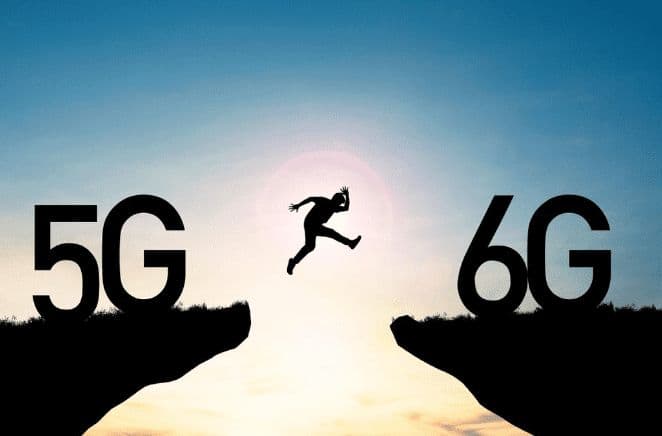5G vs. 6G: The Next Evolution in Wireless Technology

Introduction
The evolution of wireless communication has fundamentally reshaped our world. From the rudimentary speeds of 1G in the 1980s to the lightning-fast capabilities of 5G today, each generation has revolutionized how we connect, communicate, and compute. Now, as 5G continues to expand globally, attention is shifting toward 6G — a technology that promises to usher in an even more transformative era.
But how does 6G compare to 5G? What are the key differences, technological advancements, and potential use cases? Is 6G just “faster 5G,” or is it something entirely new?
In this comprehensive blog, we’ll explore the difference between 5G and 6G, covering everything from technical specs to real-world implications. Whether you’re a developer, business owner, or just curious about the future of tech, this guide is for you.
What Is 5G?
Definition
5G, or fifth-generation wireless technology, is the latest standard for cellular networks, launched commercially in 2019. It is designed to deliver:
- High-speed mobile broadband
- Ultra-low latency communication
- Massive IoT connectivity
Key Features
- Download Speeds: Up to 10 Gbps (theoretically)
- Latency: As low as 1 ms
- Frequency Bands: Sub-6 GHz and mmWave (24–40 GHz)
- Device Density: ~1 million devices per km²
Real-World Applications
- Autonomous vehicles
- Remote surgeries and telemedicine
- Smart factories and IoT
- Enhanced mobile gaming and AR/VR
What Is 6G?
Definition
6G is the sixth-generation wireless technology, currently in research and development. It is expected to be deployed around 2030, and will go far beyond simply improving speed or latency — it will integrate AI, space-based connectivity, quantum communication, and more.
Expected Features
- Download Speeds: Up to 1 Tbps (100× faster than 5G)
- Latency: Less than 0.1 ms
- Frequency Bands: Terahertz (THz) range (100 GHz–1 THz)
- Device Density: Up to 10 million devices per km²
- Network Intelligence: Fully AI-native infrastructure
Anticipated Applications
- Holographic communication
- Brain-computer interfaces
- Digital twins of real-world systems
- Real-time, global autonomous systems
5G vs. 6G: A Side-by-Side Comparison
Feature5G6G (Expected)Peak Data RateUp to 10 GbpsUp to 1 Tbps (1000 Gbps)Latency~1 ms<0.1 msSpectrum RangeSub-6 GHz and mmWaveTerahertz (100 GHz – 1 THz)Bandwidth~1 GHz10–20 GHzDevice Connectivity~1M/km²Up to 10M/km²AI IntegrationPartial, mostly backendFull integration throughoutEnergy EfficiencyImproved over 4GAI-managed, ultra-efficientUse CasesSmart cities, AR/VR, IoTHolograms, global AI, digital twins
Key Technological Advancements in 6G
1. Terahertz Communication
6G will operate on terahertz (THz) waves, which provide significantly higher bandwidth than millimeter waves in 5G. This enables:
- Real-time, ultra-HD streaming
- Near-instantaneous data transfer
- Holographic video communication
2. Artificial Intelligence-Native Networks
6G will be the first mobile network generation designed to natively integrate AI and machine learning for:
- Predictive traffic control
- Self-healing networks
- Intelligent routing and caching
3. Global Coverage via Satellites and HAPS
Unlike 5G, which relies heavily on dense terrestrial infrastructure, 6G will integrate with:
- LEO satellites (like Starlink)
- High-altitude platforms (HAPS)
- UAV-based base stations
This allows true global connectivity, even in remote areas.
4. Digital Twins & Metaverse Enablement
6G will power the real-time synchronization of digital replicas of physical environments. Use cases include:
- Smart cities
- Climate modeling
- Personalized healthcare simulations
5. Advanced Security with Quantum Cryptography
6G networks may incorporate quantum-resistant encryption and quantum key distribution (QKD) to protect against future cybersecurity threats.
Real-World Impact: How Will Life Change with 6G?
Healthcare
- Remote surgeries will be indistinguishable from in-person procedures
- Wearable sensors powered by 6G will monitor and react to health conditions in real-time
- Brain-computer interfaces could allow communication for paralyzed individuals
Industry
- Fully autonomous, AI-driven factories
- Precise control of digital twins in real time
- Optimization of energy usage through predictive modeling
Education and Work
- Immersive holographic classrooms
- Virtual meetings with full-body avatars
- Cross-border collaboration with zero lag
Consumer Experience
- Seamless AR overlays in real-world environments
- AI-enhanced personal assistants that understand context deeply
- High-speed connectivity even in rural or remote areas
Challenges Ahead for 6G
Despite its exciting promises, 6G faces several significant challenges:
1. THz Propagation Issues
- Terahertz waves have very short range and poor penetration
- Requires breakthroughs in antenna design, beamforming, and material science
2. Infrastructure Costs
- Upgrading current networks will demand massive investment
- More power-efficient base stations and compact devices will be necessary
3. Regulatory & Spectrum Allocation
- Global cooperation is essential for standardizing THz spectrum
- Governments and telecom companies must align early on
4. Data Privacy and Ethics
- With AI and bio-connectivity, data protection laws will need a major overhaul
- Questions around surveillance, ownership, and ethical use will become more complex
Where Do We Stand Today?
5G Status (2025)
- Deployed in over 80 countries
- Standalone (SA) 5G becoming more common
- Used in smart cities, connected cars, and private enterprise networks
6G Research (as of 2025)
- Led by countries like China, the U.S., South Korea, Japan, and Finland
- Major players: Samsung, Nokia, Huawei, Ericsson, Qualcomm
- Projects like Hexa-X, Next G Alliance, and 6G-ANNA are defining early standards
Timeline: 5G to 6G
YearMilestone2019Commercial rollout of 5G begins20235G Standalone becomes more widespread20256G research accelerates globally2026–2028First experimental 6G trials2028–2029Pre-commercial 6G pilots2030Commercial 6G rollout expected
Conclusion
While 5G is still transforming industries and lifestyles today, 6G represents an entirely new paradigm. It won’t just be faster or lower in latency—it will redefine the boundaries of what's possible in communication, computation, and connectivity.
If 5G gave us smart cities and self-driving cars, 6G will bring us intelligent societies powered by real-time digital twins, ubiquitous AI, and ultra-responsive interfaces between humans and machines.